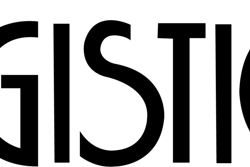
Understanding your customer brings you one giant step closer to the ultimate goal of the supply chain—meeting demand at the lowest possible risk and cost.
Your first step is to translate your prediction into a precise, actionable plan for meeting demand for the next year.
This is what we refer to as the Unified Demand & Supply Plan. Your blueprint to inventory planning that considers every factor that could affect service to your customer, as well the costs to your business: demand, supply, inventory levels, supply chain constraints, disruptions—present and future.
Here’s how you generate a Unified Demand & Supply Plan:
- Factor internal and external lead times and lead time variability into the plan
- Cover demand based on optimal order schedule that balanced carrying costs and acquisition costs
- Calculate safety stock that precisely service and product availability goals
- Build precise order forecasts that fulfill all forecasted demand, prevent stockouts and excess inventories
- Adjust for special order considerations
- Reconcile orders to comply with supply chain constraints
- Revise and re-optimize your plan daily
Don’t Optimize One Order at a Time: The Order Point Method
Traditional systems are limited to this method of assumptions, estimations and averages because their legacy architecture and the limited computing technology of the times. These methods were necessary when designed decades ago, but result in calculations that actually increase risk in the dynamic and complex commerce environment of today.
Surprisingly, much of the traditional supply chain planning software on the market today incorporates a dangerous accumulation of assumptions, averages and estimates in the way they forecast demand, plan inventory and generate orders. At the core of these traditional platforms is often some variation of statistical forecasting and order point, or worse, min/max method.
Order point and min/max methods for managing inventory significantly limit optimization and visibility. In fact, neither method provides order projections at all. Both methods build orders based only on inventory levels at that very moment and do not consider future inventory or supply chain conditions. With the limited view of today’s data, planners are left blind to the consequences and must “trust the system” to provide recommendations. Planners and buyers are rarely inclined to trust these types of system, rendering them useless.
Min/max systems are simply not practical in today’s commerce, and for that reason. Order point solutions, on the other hand, are still considered viable by some and they often make a highly risky assumption. They assume that a balance is actually inventory available to fulfill demand. This creates a blind spot for you when generating recommended orders, and eliminates the possibility of accurate demand planning.
The risk to your service levels is significant because the inventory that the solution sees as in-stock could in fact be on the way rather than on the shelf.
Build precise order projections that fulfill all forecasted demand and prevent stockouts and excess inventories – One level lower
Serving your customers at the lowest possible cost to your business not only comes from accurate demand projections, but also a daily understanding of how you will meet that demand order by order across every SKU, location and supplier.
Joined Ordering is the Key to Optimizing Retail and Distribution Economics
Retailers and distributors typically buy lines of product from their suppliers. Product lines consist of dozens, hundreds or even thousands of SKUs from a single source, so it rarely makes good economic sense to order just one SKU from a supplier. Purchasing a single or even a few SKUs on an order drives purchasing and logistics costs prohibitively high.
Additionally, retailers and distributors have supplier order minimums or logistics constraints that are large relative to the demand covered by an individual order. In order to meet these economics and logistics constraints, inventory supply and costs must be spread across as many SKUs and units as possible on each order to make economic sense.
Your solution should assess which SKUs need to be replenished, but also those that will require replenishment before the next scheduled opportunity to order. This practice of ordering as many SKUs on a single purchase order as necessary is known as “joined ordering.” By building joined orders, inventory remains balanced so that that all SKUs in a supplier line need to be replenished at the same time. This assures two things:
1. That many SKUs need to be replenished when building the next order, thereby reducing unnecessary costs
2. That every SKU has an equal opportunity to remain in-stock until the next order arrives
The inventory balancing enabled by joined ordering helps ensure that orders today and in the future meet. Ultimately joined ordering avoids excessive cost from sub-optimized logistics, expensive fill-in orders and expediting, while also avoiding the risk of lost sales.
So How Do You Really Do All This?
As you can imagine, creating the most cost-effective plan to meet demand would be an enormously complex.
The simple answer is this: You automate this with an advanced cloud-native supply chain planning solution. Commerce is complex and increasingly so each day. The science to stay ahead of demand without putting your company out of business is also complex. However, the benefits are tremendous.
Benefits Beyond Precision Inventory Planning
The benefits of a precise, realistic inventory plan even goes beyond cost effectively meeting demand. The resulting visibility enables better strategy and efficiency across your entire company:
• Distribution centers can determine what labor to plan for a specific day in the future, because they know precisely how many and what size orders will be arriving.
• Transportation can plan routing and equipment requirements with the same visibility to when orders will be ready for pick up from suppliers.
• Finance can determine what end-of-month cash commitments for inventory will be
• Category Management/Merchandising can identify seasonal or market trends for categories, items, regions or stores.
Integration of this “single version of truth” is essential to planning and executing effectively in today’s complex and fast-moving marketplace.


















